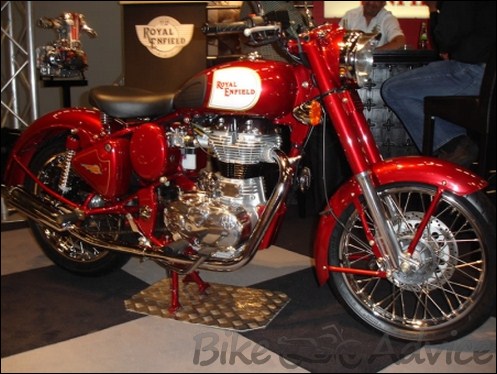According to a recent interview of CEO of Royal Enfield to the Business Standard, the company has sold sold 52,574 units, against 51,955 units a year ago. He added to this, “Remember, there were days we even struggled to manufacture and sell 2,000 vehicles a month.”

We have been hearing a few customers waiting deliberately for as much as a year to get their Classic 350 and 500 delivered. So, when he was asked whether Royal Enfield was able to match the demand and supply, he replied, “No. The more we make, the more we fall behind. Despite increasing our volumes to 6,000 a month from 4,000, we could not match the demand, and our waiting period is still higher.
While the demand is for 7,500 vehicles, we could manufacture only 6,000 vehicles. For instance, the waiting period for a Classic 300, one of the top-selling models, is six-eight months.”
There was a question put forth to him on the areas of concern, the bottlenecks of the company and the plans for the same to be addressed. His answer for this question came in a descriptive manner. It is, “There are three concern areas — quality, supply-demand constraint and selling our products overseas”.
He then added, “As for the quality issues, there were complaints about the engines, which we have fixed. There were also some concerns about the clutch failures, ridding and handling issues. Our customers’ expectations are growing, especially after the launching of the Classic 500 in November 2009. The model is bought by car owners whose expectations are much higher. We are also looking at the mis-match between the demand and supply. This was due to manufacturing constraint”.
“The third focus area is reach, both domestic and overseas. In India, we have 180 dealers. We are planning to add three-four dealers every month for the next three years. Overseas, we are establishing our presence in the UK, France, Italy, Spain, USA and other countries. But we have to take a re-look at our sales, service and distribution strategies. The company caters to 29 countries and last year 2,500 units were sold in overseas markets. Since we understood the Indian market, now it is time to look at other developing countries and Southeast Asia”.
He also discussed about the hike in production level of the present plant. He said, “We are planning to increase our capacity to 150,000 lakh next year and to 250,000 lakh in three-five years through both greenfield and brownfield expansions. The company is looking for land in Tamil Nadu and Andhra Pradesh. The suppliers’ capacity is the other challenge. Recently we have started importing batteries from Italy, which is not only price-competitive, but helps address the quality issues.”
To answer everybody’s question on bringing down the waiting period after opening up of new plants, he answered, “It is difficult to say. As I said earlier, when we increased our capacity to 6,000 from 4,000, we thought we would address the waiting period. Instead, it increased the demand further”. This fact clearly reveals that only Royal Enfield bikes can be marketed in India even with such a hefty delay in delivery period. It’s highly unbelievable to see such high quality bikes for which, I should say we all crave for.
The last question was very interesting indeed. The question was about identifying which was the model that aided the company in total transformation. He answered, “All brands helped the company, but Classic has helped the brand grow. The company, which sold 200-300 units in November 2009, now sells 3,000 units a month. It attracts large number of car owners. The Thunderbird Twinspark, the first model to feature Royal Enfield’s revolutionary Unit Construction Engine, has attracted large number of urban information technology professionals.”
With the company’s plans of adding few more models to its current portfolio and increasing its production level in a vast manner, we are pretty sure that Royal Enfield has got a long way to go in the Indian market.
Regards,
M.Naren.
Author – BikeAdvice.in


![Royal Enfield Guerrilla 450 Launch This Year [Speculation]](https://bikeadvice.in/wp-content/uploads/2022/12/Royal-Enfield-Hunter-450-pic-headlamp-100x70.jpg)